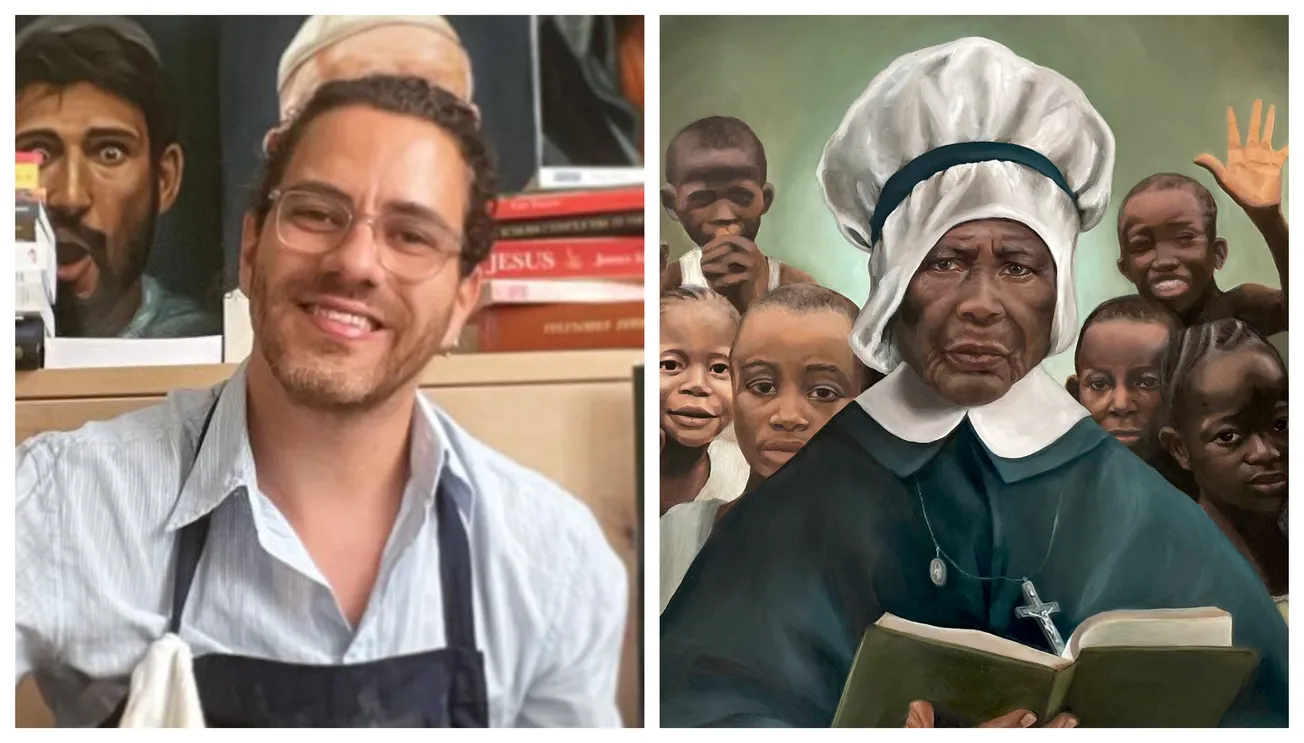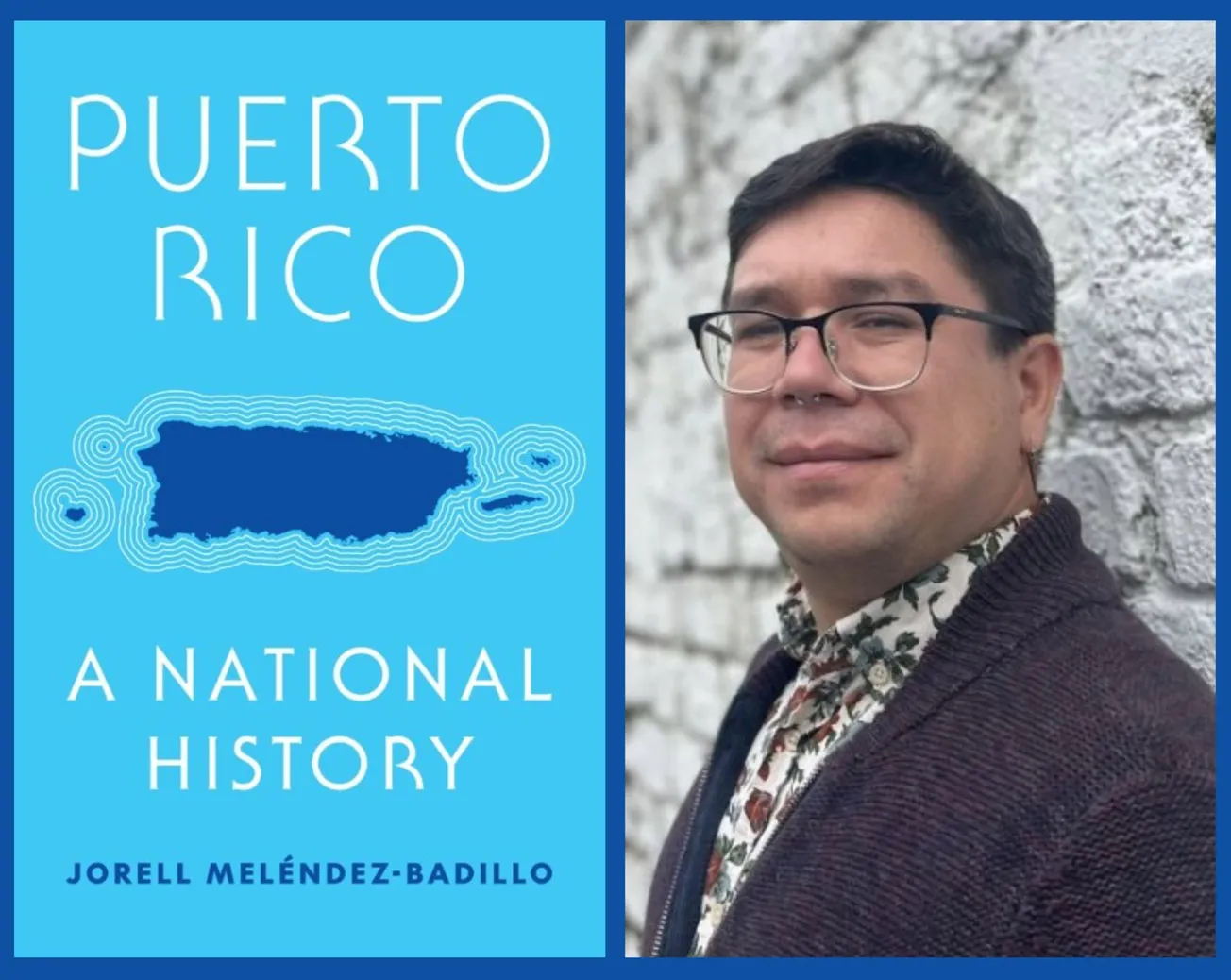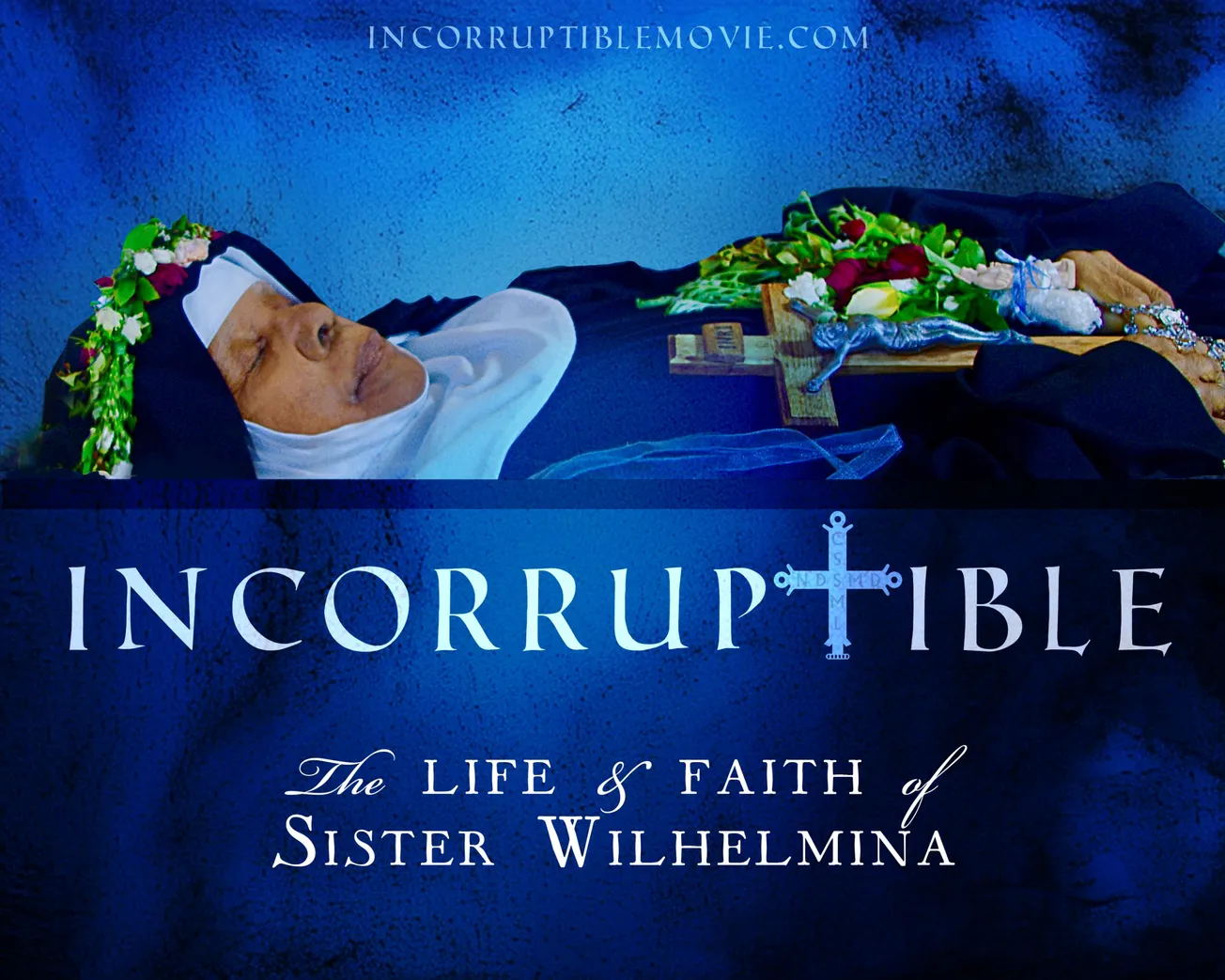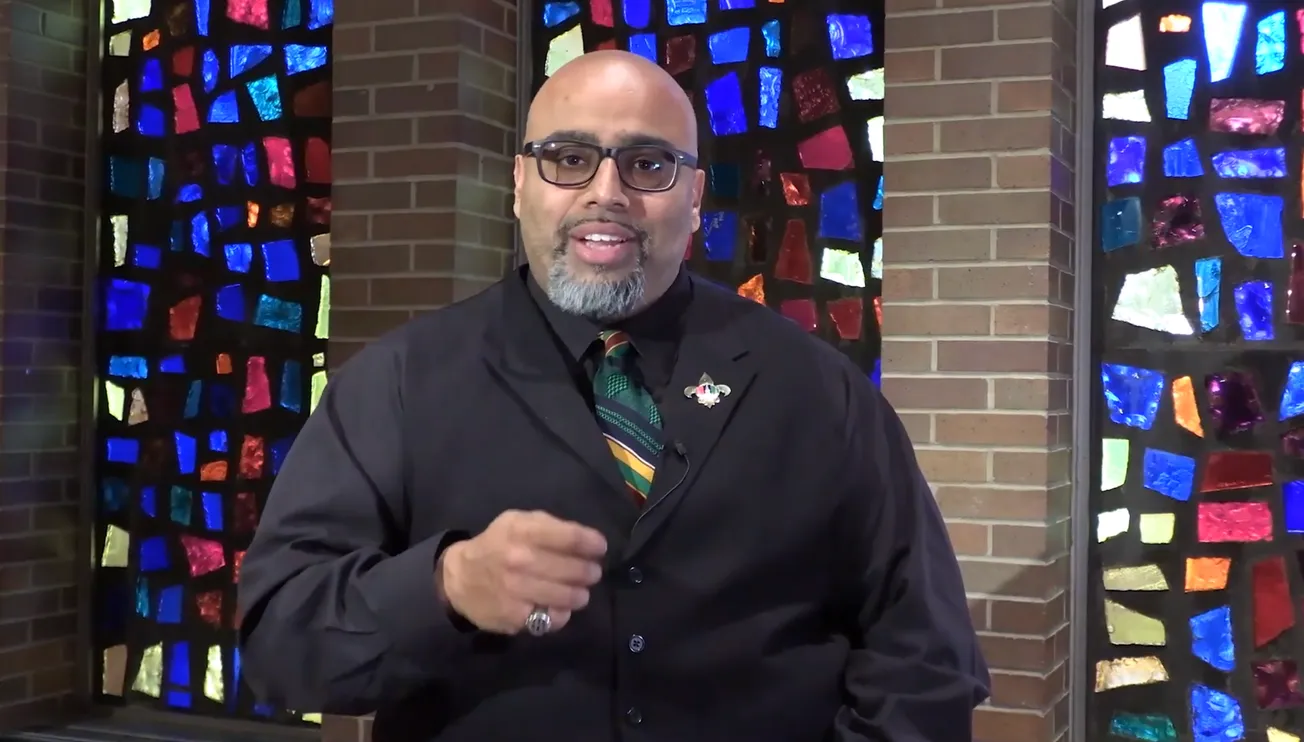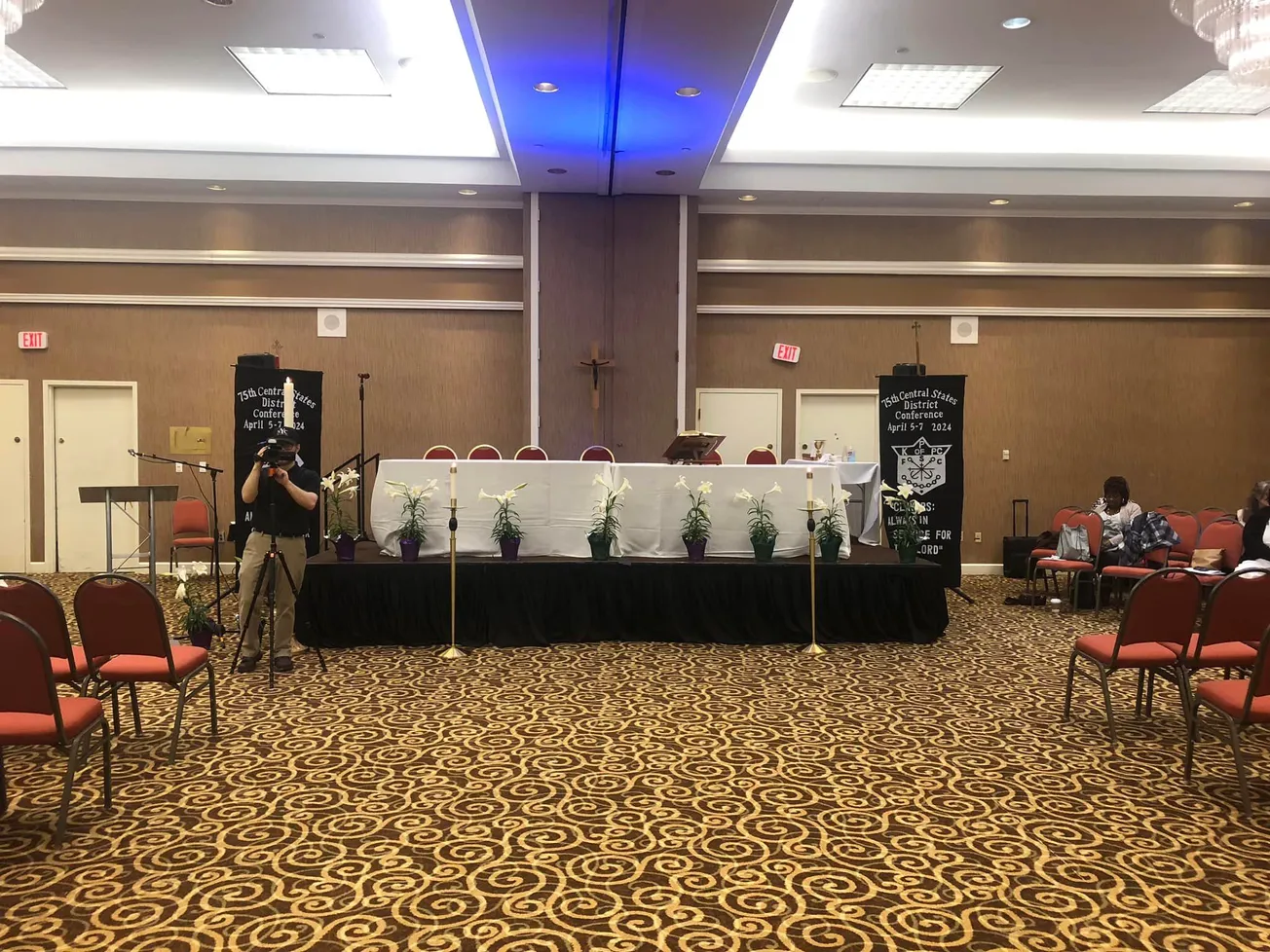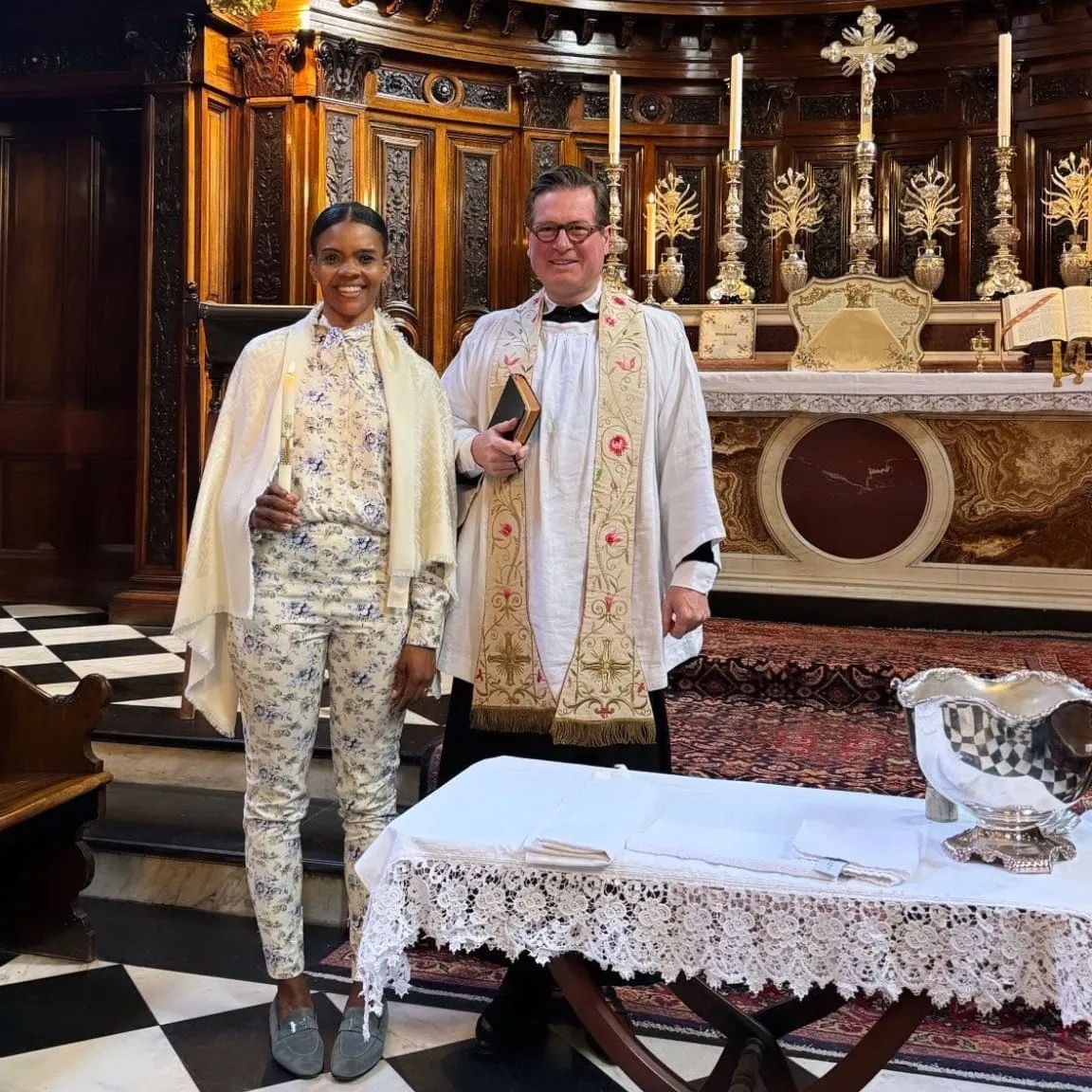When Ruben Ferreira was a teenager, he had an experience with God that changed his life. Baptized years prior, he did not heavily identify with his Catholic faith until his later teen years. Everything changed when he watched a documentary about the life of St. Teresa of Calcutta that deeply moved him. The details of her life of service to the poor and sick opened a wellspring in his heart. Thus, his journey in his search for God began.
At this turning point, he began to wonder about the saints: “Who are these people for the sake of God? Who is God?” From that moment on, Mother Teresa remained a friend in the background of Ferreira's life.
A natural artist, Ferreira began incorporating the saints and their lives into his habit of painting. It wasn't until a year before he moved from Portugal to London that he encountered an art teacher that began to challenge his method of work. For a technique, his teacher encouraged him to hide his unfinished paintings under his bed at night. As a result, he could approach his work with fresh eyes the next day.
“Safe spaces are comfortable,” he recalled when asked about his technique, “but there's no growth in them.”
In 2020, after the murder of George Floyd and the subsequent explosion of civil unrest, Ferreira was challenged once again. He realized the Catholic Church lacked diversity in its representation of the saints. In one particular instance, Ferreira invited one of his Black friends to look at his work. As he watched his friend enjoy his paintings, he realized with dismay that his friend had no one that resembled him.
For Ferreira, this was a problem.
“I strongly believe that art should be a place of encounter,” he said. “I want people to look at the paintings and feel a connection to God. If I were a young Black boy, I would want to see people like me.”
While people feel connected to God through many expressions, Ferreira feels connected to God through his artwork.
“Painting is a sacred place for me,” he said. “It's where I connect with God and the saints. Painting, for me, is praying. I want to make sacred art more human and approachable.”
After the pivotal experience with his friend, Ferreira began to diversify his paintings.
“If diversity should be celebrated in the church, and I believe it should, then we need more of it,” he stated.
Most recently, Ferreira painted Servant of God Mary Lange, who founded the Oblate Sisters of Providence—the first African-American religious community in the United States. Lange faced rejection from all of the religious orders she previously sought community with, but it didn't stop her from pursuing God's calling on her life. The Oblates went on to educate young African-American girls for much of its early history.
After learning about Lange, Ferreira got inspired.
“I began to place the pieces in my mind and heart before the canvas,” he said. “I knew that I had to tell her story.”
While some people were under the impression that Lange looked upset in the painting, Ferreira explained that her expression is one of strength and determination.
“Despite what she went through, she was completely convinced of God's calling in her life,” he said, noting that he painted her with a book in her hands to represent her commitment to children's education.
Ferreira's efforts to diversify imagery in the Church come at a much-needed time of renewal. Catholics of color are not only under-represented in iconography, but in Catholic media generally. A survey conducted by US Catholic earlier this year found that 76% of American Catholics disagree that Catholic media does a good job of representing diversity in the Church.
Similarly, 66% of American Catholics do not feel represented by Catholic media. Most Catholic theologians rebut Protestant objections to holy images by stating that imagery was how the Church told the story of the gospel before the scriptures were completed and compiled. This is precisely why diversity in imagery is needed in the Church now more than ever.
The Catechism of the Catholic Church states that God has “willed to make men holy and save them, not as individuals without any bond or link between them, but rather to make them into a people who might acknowledge him and serve him in holiness.” Elsewhere, the catechism explains that this holy unity does not take away from the diversity of the body. For many Black Catholics, that feeling of unity is absent because of a lack of representation and understanding of our culture(s).
It’s crucial that the saints from around the world and their stories be presented as part of the universal Church. Not only does diversity demonstrate human strength, but it reflects God's ultimate love and power. For Ferreira, this is part of what draws him into learning about the lives of the saints.
“Sometimes we forget that we have amazing saints around the world,” he says, “and I want to help tell their stories.”
Briana Jansky is a freelance writer, author, blogger, and host of the Geeks For Jesus podcast.


